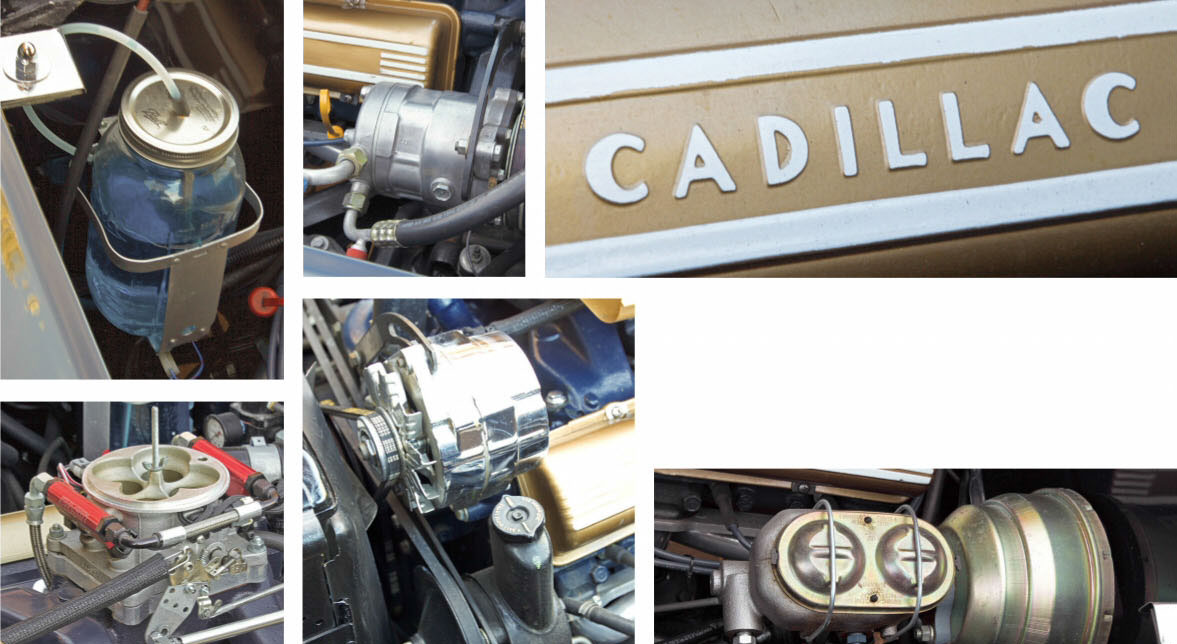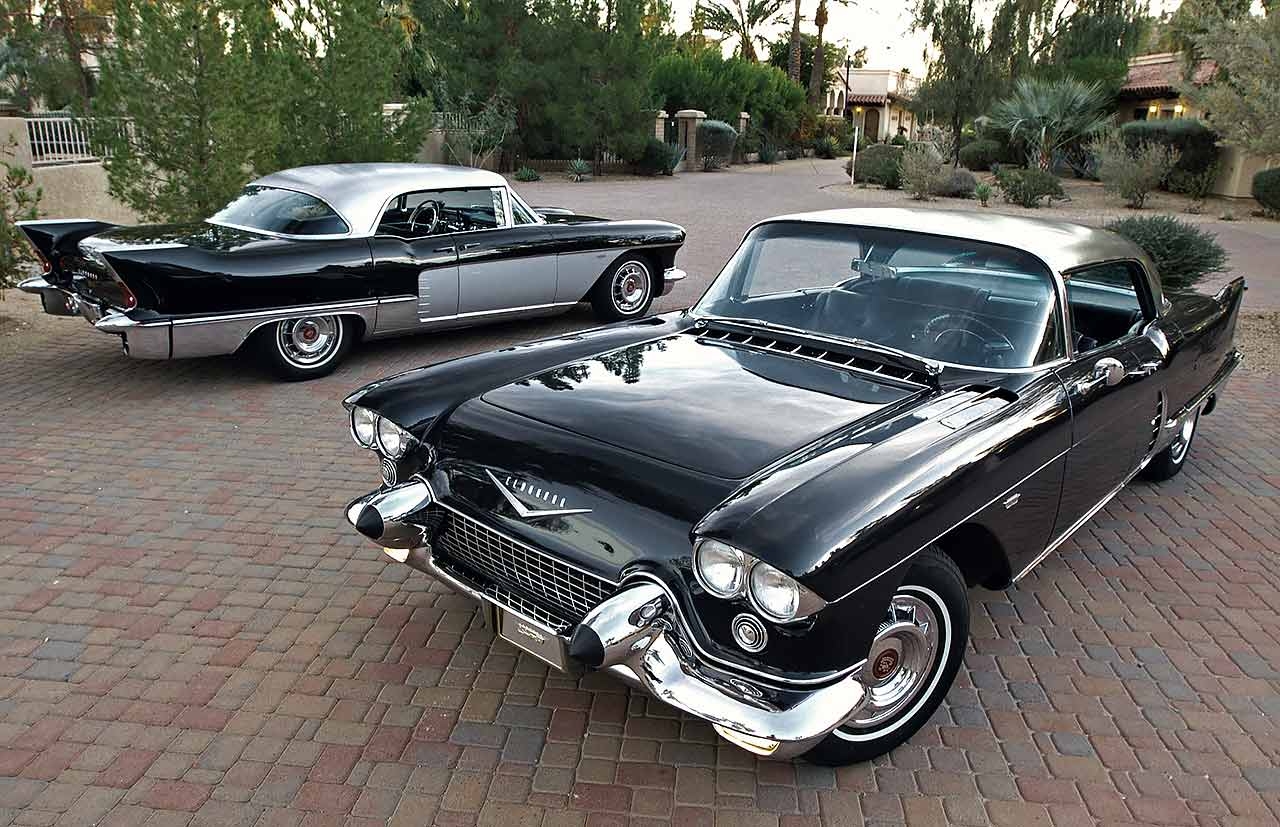
Stock vs. modified Eldorado Faceoff Which is better: a factory-original 1958 Cadillac Eldorado Brougham or a thoughtfully modified 1957 version? Words and photography by Jeff Koch.
Cadillac Comparison Modified vs Stock Eldorados
How do you modify a legend without removing the qualities that make it legendary? One of the perils of modifying a car—any car, from plebeian to posh— is that it’s too easy to mask or dial out some of the personality of that car. Whatever the goal is—quicker, rides nicer, corners flatter, looks tougher—six decades of technological progress means that goals are easily reached. Yet the fundamental character of the car often changes in the process…
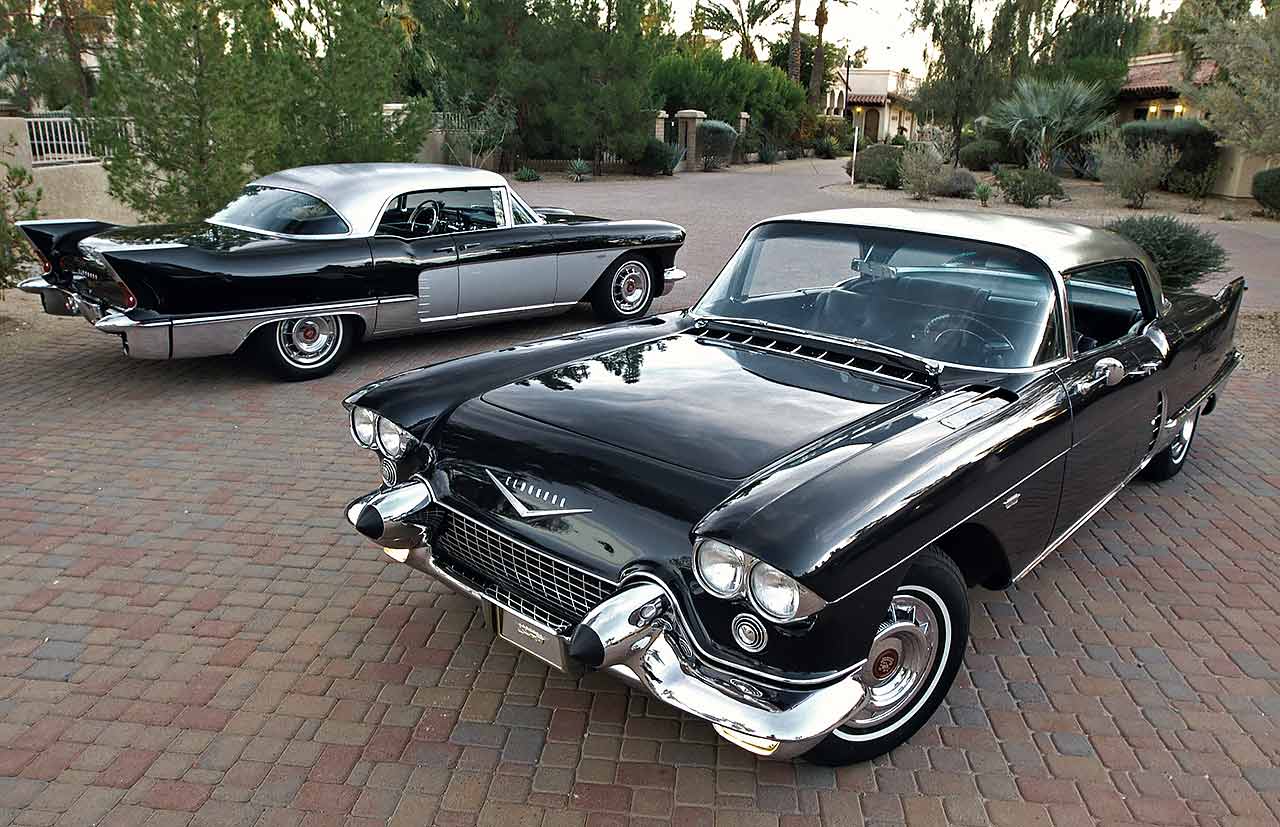
As an example: radial tires. Few who have experienced bias-ply tires can refute the stability and handling prowess of a modern radial tire, even on an old car. They’re available, they’re cheap, and they offer peace of mind. Putting aside the personal question of whether radials “look right” on an older car, they affect both ride quality and handling: Bias-plies frequently feel wobbly, while radials feel secure. Radials also have a psychological knock-on effect: They ride well enough that a driver feels like he can do things more confidently than he could have on bias-plies. With old-school tires, you already know that they’re going to scream at you if you’re cornering at more than 12 miles per hour, so the natural inclination is to back off, to avoid having to hear from your contact patches (and a piece of the sidewall, as they generally roll over in bends). Slowing down means the suspension compresses less in turns at speed.
Put radials on the same car, and you can double your cornering speed without argument from the tires. But at that velocity, the soft suspension can lean you over at an exaggerated angle. The tires will stick, but because there’s less give in the rubber despite your greater speed, body lean becomes far more dramatic. Then to compensate for you sloshing back and forth in the turns, soon you’re stepping up to gas shocks, maybe anti-roll bars. And then your old car doesn’t feel like your old car anymore.
Making changes while keeping true to the car’s essence is tough to pull off. It’s so easy to dial out the feel of what made you fall in love with your car in the first place. Is that something you want to lose? Conversely, if you make a change, and you can’t feel it, did it happen? (And if it did, what did you spend your money on?) Insert metaphor about a tree falling when no one is around to hear it.

With this in mind, we move to our feature cars. Neil De Atley of Scottsdale, Arizona, had two Cadillac Eldorado Broughams, one 1957 model, and one ’1958. (We say “had,” because, sadly, Neil passed away during the preparation of this story.) In their day, Cadillac’s Eldorado Brougham was as good as luxury motoring got. The Brougham was meant to put Cadillac at the top of the car-world’s pecking order—and deliver a good, hard slap to Ford and its premium-priced Continental MkII in the process. In an era when Rolls-Royces cost $10,000, the Eldorado Brougham started at $13,074. There were choices—paint color and interior upholstery, for example—but no options.
Design head Harley Earl combined features from a couple of Motorama show cars including the 1953 Orleans, which presaged the panoramic windshield and the pillarless four-door hardtop/suicide rear-door configuration, and the El Camino coupe concept of 1954, which gave us the brushed stainlesssteel roof. Making the “Florentine” roof a styling feature made some sense. At 55½ -inches high, the Eldorado Brougham was a full 3½ -inches lower than a contemporary Series 62. The Eldorado Brougham’s body was also 2½ -inches narrower. Doors latched onto a stubby pillar barely a foot high, helping maximize what rear legroom was available.
A tubular X-frame was developed to work with the industry’s first production self-leveling air suspension (replacing springs with inflatable rubber bags), in conjunction with America’s first production four-link rear suspension. New low-profile 8.40-15 U.S. Royal high-speed-rated white-stripe tires rolled on custom 15 x 6 Kelsey-Hayes forged-aluminum wheels. The higher roll center, lower center of gravity, shorter wheelbase (126 inches, versus 129½ on Series 62 Cadillacs), air suspension, standard 61-inch tread, and special tires combined to offer Cadillac-levels of driveability in a more controllable and dynamic package.
Of course, power steering, brakes, windows, locks, and front seat with “favorite position” programming, along with air conditioning were standard-issue on the Eldorado Brougham. So was the ability to open, close, and lock the trunk via controls from the glove compartment. The rear doors had switches in them that prevented the transmission from shifting into a driving gear while they were open, and they automatically locked while driving. What’s more, every Eldorado Brougham was delivered with a full vanity set, including four metal drink tumblers and magnetic tray in the glovebox, along with a tissue holder and cigarette case. An Evans compact case also included a comb, mirror, cigarette case, lipstick, coin holder, and powder. In the rear, a special compartment contained a small leather notebook with Cross pencil, beveled mirror, and a perfume atomizer with a single ounce of Arpège Extrait de Lanvin perfume.
Only 704 Eldorado Broughams were built on a special line at Cadillac’s Clark Street plant in Detroit—400 for the 1957 model year and 304 for 1958—and the only real year-to-year difference between them, beyond a revised color palate and minor trim upgrades, were engine specs. Both years used 365-cu.in. V-8s mated to GM’s four-speed Hydra-Matic automatic transmission, but the ’1957 model used dual four-barrels and 10:1 compression, for 325 rated horsepower; the ’1958 version switched to a trio of two-barrel carbs with compression bumped a quarter point, and was rated at 335 hp. Engines were sound-tested, and only the most silent powerplants were chosen for Brougham duty.
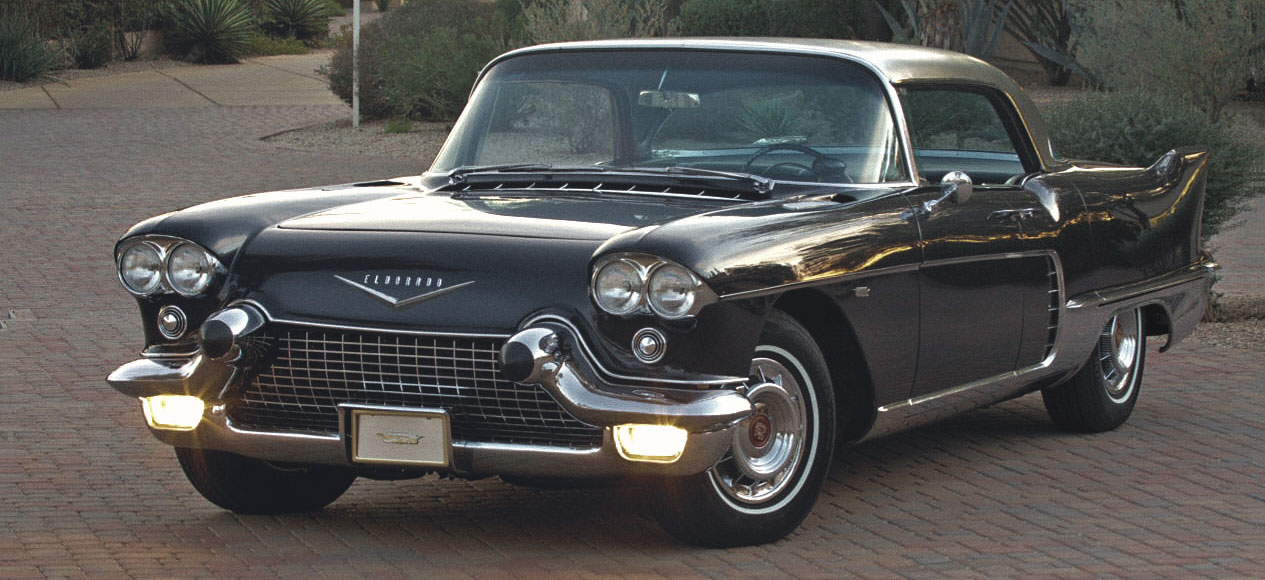
The Eldorado Brougham was a monument of up-to-the-moment rocket-age technology, a spare-no-expense flagship that, even with a $13,000-plus base price, still cost Cadillac $10,000 per car to build. But that technology is now 60 years old, and accidents and entropy happen. (Just look at the “before” photo of the navy blue ’1957 car below.) When just 400 were built, and complete cars regularly sell for six figures on the auction circuit, parts can be hard to come by. As a parts-car, the ’1957 Eldorado lacked the dual-four-barrel intake manifold, air suspension, all of the hard-to-find vanity items, lots of body panels, and more. What to do?
Neil, and his onsite restorer William Linq, went the Eldorado- rod route instead. The goal was to tread that fi ne line between Cadillac’s intentions and updates that made the car driveable without changing the Brougham’s look or its fundamental character—a tough trick to pull off when you’re missing many of the pieces that made it so special in the first place.
Under the hood, the missing dual-four-barrel setup was replaced with an iron Cadillac single-four-barrel intake and a FAST EFI setup. The throttle-body lives where the carburetor once did, hooks up to the factory throttle linkage, and has integral injectors and sensors; the computer is hidden under the glovebox.
(Though fuel injection was available on a variety of cars in 1957- ’1958, and there were some Rochester fuel-injection prototypes running around in Cadillacs of that era, the division opted not to include it.) Driveability and throttle response were the primary motivators here; improved fuel economy and cleaner exhaust were incidental. Other ancillary components, like an oxygen sensor in the exhaust and an external electric fuel pump, were also added. This may soon be switched to an in-tank pump, for noise issues. Custom exhaust headers replaced factory manifolds, to allow better breathing, and 2½ -inch pipes and Flowmaster mufflers release back pressure.
A variable-ratio steering box, sourced from a 1976 Cadillac, quickened up steering from four turns lock-to-lock to 2¾ . The power booster is from a mid-’60s Cadillac—still marque appropriate, if not era correct. The massive generator, used only on Broughams and on ’70s GMC motor homes, was replaced by a chromed 120-amp Delcotron alternator. The 12-inch-diameter four-wheel-drum brakes remain, but the Bendix system was replaced with a more contemporary master cylinder and booster as the newer dual-reservoir master becomes something of a safety feature. Wipers were converted from vacuum to electric control. The air bags that allowed the low stance were long gone, and rather than replace them with one of the modern airbag systems that have developed in the last few decades, builder Linq was authorized to use a set of four Series 62 springs with one and a half coils removed and one-inch rubber spacers atop each.
The HVAC system was incredibly complicated, and was neatly sorted out. The original car had three heater cores: one in the air-conditioning system, and one under each side of the front seat, to warm the toes of rear-seat passengers in winter. The rear-seat heaters were eliminated. As the builder suggests, “It was a lot of weight in water alone, and in Arizona, we don’t get the opportunity to use ’em much anyway.” The original (“marginal at best,” says the builder) air-conditioning system was removed and replaced with a Vintage Air system. The unit is designed to mount under the dash, with the new heater core and evaporator, but to keep the interior looking factory-correct, the system runs diagonally from the fender behind the glovebox into the car, with controls re-engineered to work with the factory controls. The fiberglass plenum that fed the dash vents would often leak, resulting in a chilled ice box of a glove compartment, but little cool air for inside the car, so the builder fabricated ducting from two-inch black PVC pipe, which helped increase air velocity significantly. The return hose was set up to pull fresh air from the cowl vent.
The body and interior were restored to their former glory— no updates there, beyond RM Limco Navy Blue paint and a leather dash pad to replace the vinyl pad on the original Cadillac. Linq recreated the optional, less-common, fragile sheepskin flooring. These were restored to look and act as new—you could never tell that they weren’t. But changes abound inside—all of them invisible. The lighter seat trolley from a 1971 Cadillac was substituted for the complicated ’50s-built unit. According to Linq, “the ’1971 unit is simpler and actually works. The factory memory function only remembers where it broke in 1959.” Similarly, the starter interlock, rendering the car immobile if the rear doors were open, was discarded in the name of lightness and modernization. Overall, Linq’s build removed about 350 pounds from the ’1957 Eldorado—roughly six percent of the car’s overall weight. It’s also worth noting that both cars run on modern radial tires, something which will eliminate one possible variable on our test drive.
So, we took these two cars on back-to-back jaunts around greater Scottsdale—the stock Tri-Power ’58 Cadillac first, and the EFI-modified ’1957 car second, so that we could baseline a stock vehicle, and then feel how the modifications played into changing the car’s character. And let’s cut to the headline here: With very little exception, differences were minimal. The EFI modified 1957 Cadillac is every bit a Cadillac—no rough edges, no greasy kid stuff. If you didn’t know what was going on under the hood, or under the chassis, you’d be hard-pressed to tell what was what. We did know what was going on under the hood, and we were hard-pressed to tell. It was modified, but not hotrodded.
From inside the car, the Flowmaster mufflers may be a degree raspier than stock, but it could just as easily be mistaken for a slightly high idle. The length of the Cadillac’s exhaust mellows the usual crackling sharpness of tone considerably. Put the seating into position, and the power controls work fine—there’s no sense that more modern pieces underpin the stately bench. Seat-of-the-pants acceleration with the four-throat EFI throttle-body is absolutely on par with the Tri-Power carb setup, which is either terrific because you get the same power from four throats or six (or, on a factory ’1957 model, eight!), or suspect, because the EFI car is lighter than stock. Ride quality was similarly comparable. The coil-sprung modified car was incrementally less floaty, but the harsh realities of the pavement below remained blissfully distant from the cockpit; the conversion had not turned our Cadillac into a Pro Touring track-day monster.
The change we felt more than any others was within the steering. The later variable-ratio steering box meant we could change directions far more quickly. The slower steering in the stock ’58 car meant that there was no wallow while changing lanes; quicker steering could induce such a thing in the modified car, but the coils amply compensated for those transitions. In the cut-and-thrust of modern traffic, the slightly quicker steering made the Eldorado Brougham feel more nimble, without feeling any less stately.
So, how do you update a legend without removing the qualities that make it legendary? Very carefully. Do rear-door interlocks, a memory seat, and rear-seat heating really define the Cadillac driving experience? Does their removal hinder the ability of owners and passengers alike to enjoy the rare occurrence of a ride (much less a drive) in such an automobile? We have seen that it is not necessarily so. One back-to-back drive in these two Cadillac Eldorado Broughams proves it.
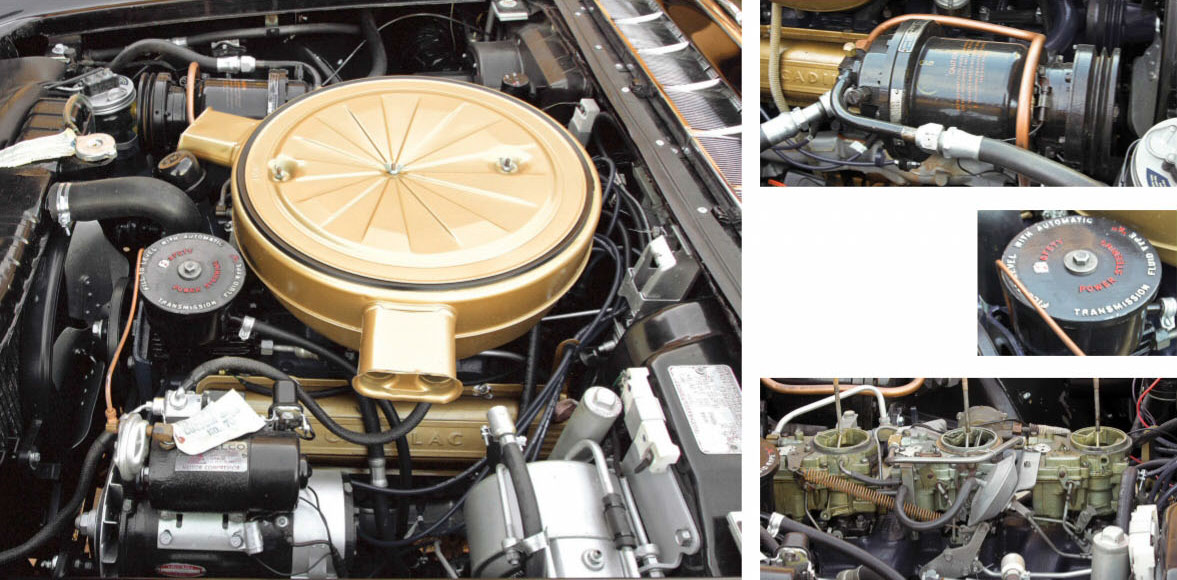

The Eldorado Brougham’s leather interior greeted driver and passenger alike with open arms, er, we mean doors.
